I’ve had what might crudely be called a hard-on for crown imperial (Fritillaria imperialis) for a good long time – since first lusting after them in St. James Park.
Reader, last year, I planted them.
The huge bulbs have a well-deserved reputation for being stinky. As do the flowers. But, believe me, I have no regrets.
Photographing them is my date-stamped trick for recording plant labels. You’re welcome. (Cursor over smaller images to read the captions, or click any image to see the slideshow.)
At the beginning of May, I left an almost dormant, denuded garden for a five-day trip to Austin, Texas, to join the 10th anniversary Garden Bloggers Fling. When I returned, spring had arrived with a vengeance.
The first to open and appear were my enormous fritillarias. They’re still going strong, and at the moment they look like they’ll outlast the tulips. Big bulbs, big plants, big display.
I’ve caught people staring at my garden from across the street. It might be the overall display (polishes fingernails on chest), but it might simply be those crazy plants.


Of the ten bulbs I planted, only seven grew, two of them looking stunted. The stunted or missing flower shoots might be due to what I call “flyer guy disease” – compaction from heavy feet short-cutting through the garden beds. Or, it might be my dry-shade conditions or a reaction to the weather. Who knows?
I’m happy with what I have, and hopeful for better things next year. Definitely worth the foxy smell, don’t you think?

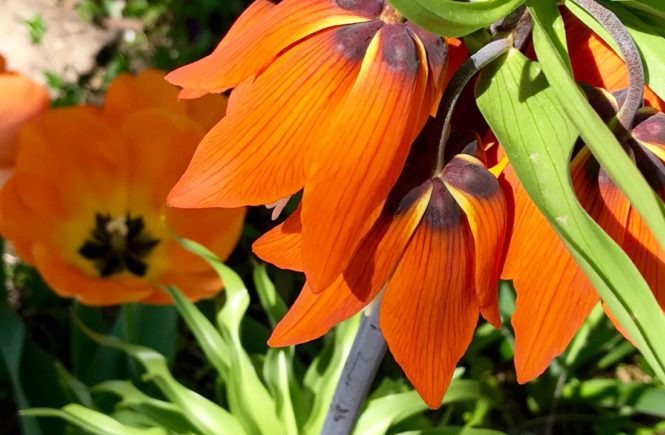

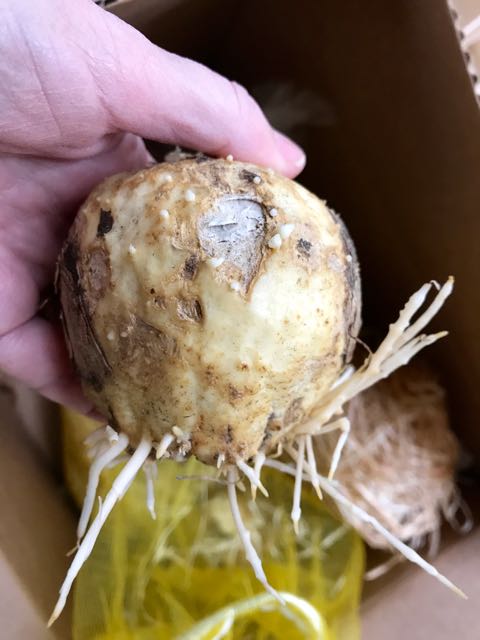
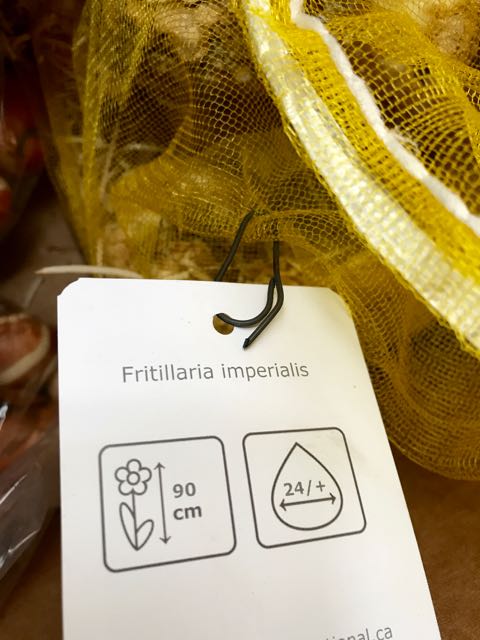
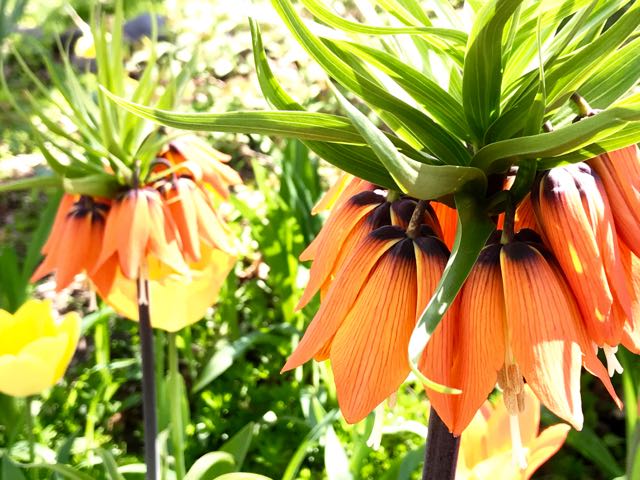
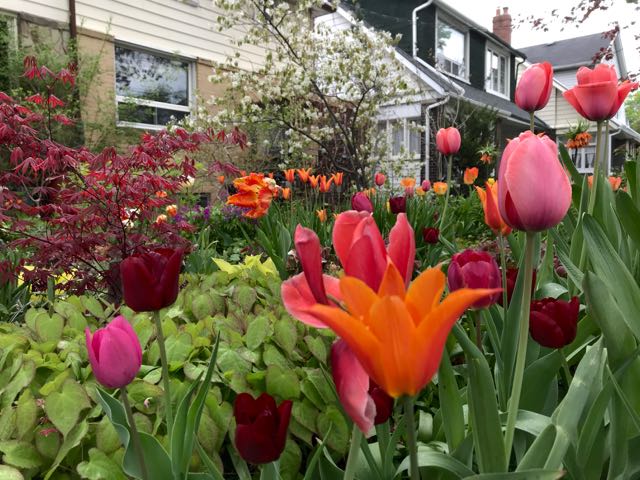



3 comments
Gorgeous! Orange flowers, regal or not, always get me. These certainly do make a statement…in more ways than one 😉
How did you plant them?
Hi, Natalia. I planted them at twice the depth of the bulb, which is the general guideline for bulb planting. Some recommendations I’ve since found suggest planting fritillaria bulbs on their sides, rather than pointy-end up. Apparently, they don’t like it when water enters the growing tip. Unfortunately, mine did not come up for a second year, so if I tried them again I’d plant them sideways, as suggested. They are such dramatic bulbs, it would be worth retrying.